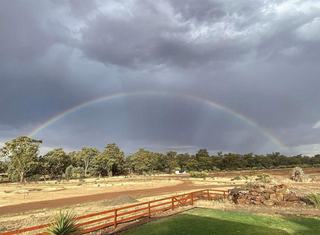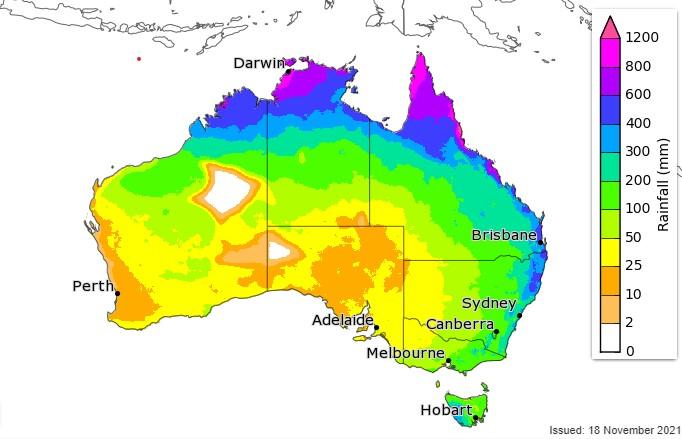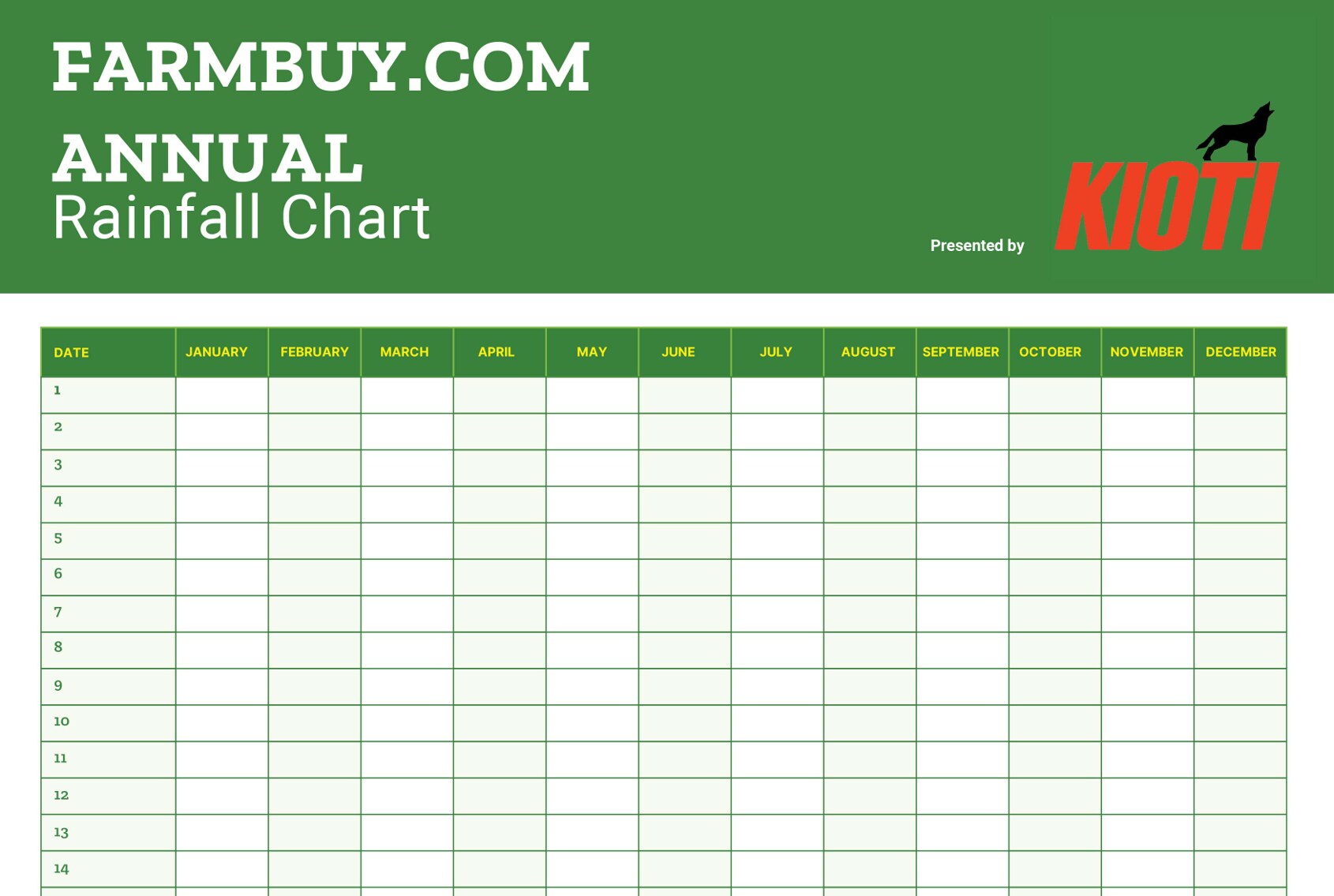How to Install And Use A Rain Gauge On A Rural Property


FarmBuy.com and Kioti create easy-to-use Annual Rain Chart
With the Bureau of Meteorology (BOM) forecasting above-average rainfall, particularly over northern and eastern parts of the country during spring and into summer, there’s never been a better time to install a rain gauge on your rural property.

Rainfall totals that have a 75% chance of occurring for December 2021 to February 2022 (Source: Bureau of Meteorology)
Selecting a rain gauge
The Bureau says the standard instrument for measuring rainfall is the 203-mm (eight-inch) rain gauge - essentially a circular funnel with a diameter of 203mm which collects the rain into a graduated and calibrated cylinder; and which is able to record up to 25mm of precipitation.
In modern automatic weather stations, a tipping bucket rain gauge (TBRG) is employed, which also has an aperture of 203mm but has several advantages. Firstly, it never needs to be emptied; and secondly, the amount of rainfall (and even the rate at which the rain is falling) can be read automatically.
Installing a rain gauge
Gauges sited near buildings, solid fences and trees can have serious errors in rainfall totals, the Bureau warns, advising that the distance of the gauge from buildings, trees or other objects should be at least twice the height of the obstruction, and preferably four times the height. For instance, the gauge should be more than 10 metres from a house five metres high, and more than 30 metres from the nearest branches of a tree 15 metres high. The gauge should also be in a place where it will not be disturbed by people, animals or vehicles.

GoannaAg's digital rain gauge 'GoRain' allows farmers to monitor rainfall remotely
Having decided on where to locate the rain gauge, the next question is ‘how high’? Too high and wind (the speed of which generally increases with height above the ground) may cause errors with measured rainfall. The rain gauges installed by the BOM have the top of the collector 0.3 metres above ground level.
Finally, the Bureau recommends ensuring the opening is horizontal, and the grass and vegetation around it should not be allowed to grow more than a few centimetres high. The rain gauge should be securely fastened so that it does not blow over in strong storms.
Measuring rainfall
Daily rainfall is nominally measured each day at 9am local time. However, there are a number of sites which report 48- or 72-hour totals over weekends if the observer is unable to be present. These are known as accumulated observations.
Rainfall has traditionally been measured to the nearest 0.2mm (1 point, or 1/100th of an inch prior to 1970), although the BOM notes that in recent years some observations are being reported to 0.1mm. Any moisture less than this is recorded as a trace.
Making a rainfall observation
Ideally, the rain gauge should be read every day as near to 9am clock time as possible. During periods of heavy rain, it may be necessary to read and empty the gauge at intermediate times to prevent the rain gauge from overflowing. This amount is then added to the amount read at the next 9am observation.
To read the contents of the rain gauge, you should first ensure the gauge is vertical, before bringing the eye level with the surface of the liquid in the gauge and reading from the scale the position of the liquid surface. Make sure you read the bottom of the liquid surface and not the meniscus, which is the slightly higher lip formed where the water surface meets the cylinder wall. If the surface of the water is midway between two divisions, read the higher division.

FarmBuy.com and partner Kioti have created an easy-to-use Annual Rainfall Chart
Recording your rainfall
Once you’re set up, recording daily rainfall is critical to identifying longer-term trends that may have a material impact on your rural property.







